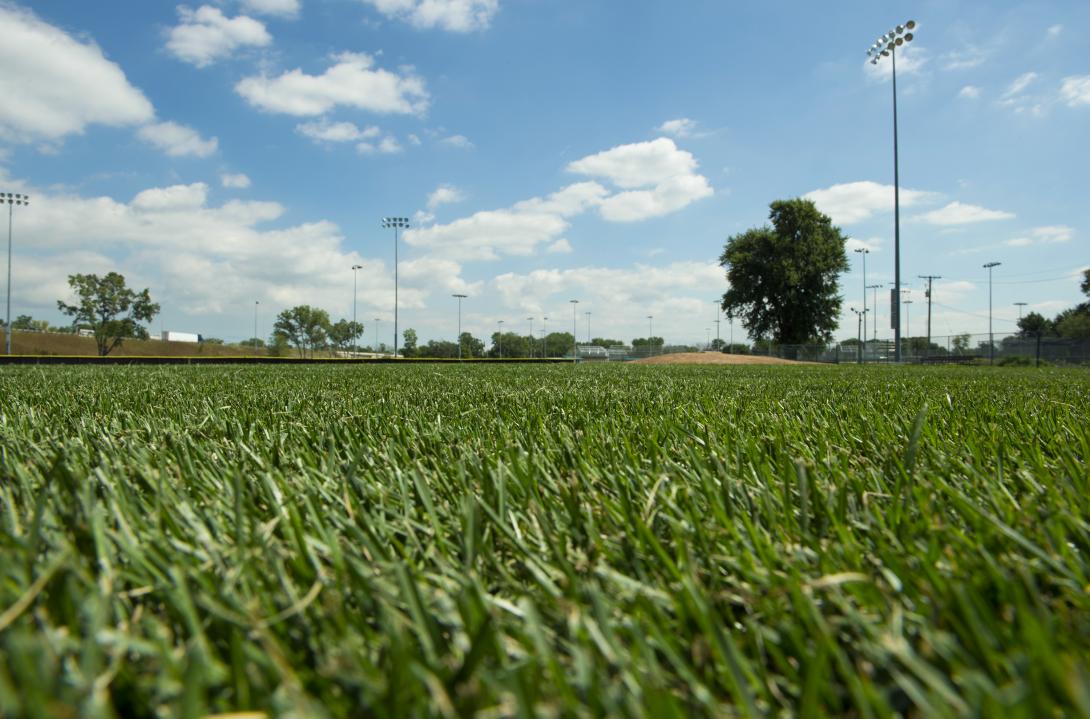Biosolids
EQ Biosolids are a product of wastewater treatment that supplies organic matter and improves the structure and porosity of soils, which allows plants to more effectively utilize nutrients. Air-dried biosolids can be used as a soil amendment or conditioner for establishing turfgrass and for mixing into custom topsoil blends.
EQ Biosolids look and feel like dark, fine-textured topsoil. They can be used on turfgrass at golf courses, athletic fields, parks and other recreational areas, and for restoration of brownfields and other disturbed lands. Better soil and healthier plants require less maintenance and make for more robust and durable landscaping.

Exceptional Quality standards
EQ Biosolids meet the USEPA’s 40 CFR Part 503 requirements for exceptional quality (EQ), which are based on comprehensive risk assessments that are protective of human health and the environment. The regulations establish levels of trace metals and pathogens that are based on scenarios of a person coming into contact with biosolids or food grown on land receiving biosolids. These scenarios include children ingesting biosolids, workers breathing dust while applying biosolids, and homeowners using biosolids in their vegetable gardens.
Extensive testing
MWRD EQ Biosolids go through an extensive testing regimen to ensure each batch is of the highest quality. The MWRD has been successfully using EQ Biosolids on golf courses and athletic fields at both public parks and schools in the Chicago area for more than 20 years.

How To Use EQ Biosolids
-
Athletic Fields- Topdress athletic fields and other turfgrass areas.
-
Topsoil Blending- Blend 25-50 percent uniformly with topsoil and spread as needed for establishing turfgrass and landscaping.
Benefits of using biosolids Include:
- Increased infiltration and water holding capacity
- Longer retention of nutrients for better uptake by plants
- Improved topsoil structure and porosity for a better plant root environment
EQ Biosolids Analysis
|
Parameter |
Units |
Range |
EPA EQ Metal Limits |
Parameter |
Units |
Range |
EPA EQ Metal Limits |
|---|---|---|---|---|---|---|---|
|
pH |
|
5.8-6.7 |
|
Hg |
mg/kg |
0.69-0.92 |
17 |
|
Dry Matter |
% |
60-73 |
|
Ni |
mg/kg |
26-51 |
420 |
|
As |
mg/kg |
6.0-8.0 |
41 |
Pb |
mg/kg |
81-120 |
300 |
|
Cd |
mg/kg |
2.0-8.0 |
39 |
Se |
mg/kg |
<5 |
100 |
|
Cu |
mg/kg |
330-493 |
1,500 |
Zn |
mg/kg |
976-1,237 |
2,800 |
See the EQ Biosolids Safety Data Sheet and our biosolids monitoring reports for more information
Ordering EQ Biosolids
- No residential deliveries.
- A minimum 10 cubic yard delivery available for businesses only. Submit a delivery request.
- Limited topdress spreading for 4 acres turfgrass or more available.
- For additional information inquire at biosolids@mwrd.org.
EQ Biosolids Current Applications
EQ Biosolids were used to help transform the roof of an underground parking garage into Maggie Daley Park, a lushly landscaped park and playground in downtown Chicago. The landscape contractor used EQ Biosolids in a blend to make nearly 12,000 cubic yards of custom topsoil. The grass and landscaping is flourishing in spite of heavy use and the park is a popular destination for residents and tourists.
Related Information
PFAS - Per- and Polyfluoroalkyl Substances
PFAS By numbers - Source: CASA
Analytical Results for PFAS in 2019 Total Diet Study Sampling (Parts Per Trillion)—Dataset 1 (fda.gov)
Uptake of Perfluoroalkyl Acids into Edible Crops Grown in Biosolids-Amended Soil
EQ Biosolids Safety Data Sheet
Fact Sheet: Biosolids and COVID-19 (Español) - May 12, 2020
Biosolids/Compost Windy City Newsletters

Regulations
State law prohibits the application of EQ Biosolids on snow-covered or frozen ground. Additionally, EQ Biosolids must be applied in a manner that follows recommended application rates when used on agricultural land, and must be applied in a manner that follows best management practices to protect water quality when used on all other land.
